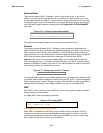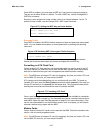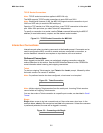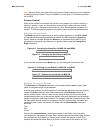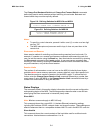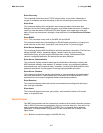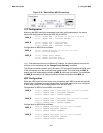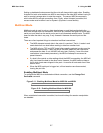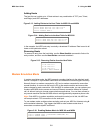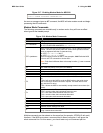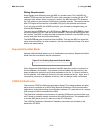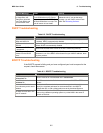MSS User Guide 5: Using the MSS
5-5
Show IPsecurity
This command shows the current TCP/IP security table, if one exists. Addresses or
ranges of addresses are listed according to the kind of restrictions placed upon them.
Show Ports
This command displays the configuration and connection status of the serial port.
Settings such as flow control, baud rate, parity, and default hosts are shown. In addition,
users can view the status of DSR and DTR serial signals, port access type, and login
status. Errors are summarized, although in less detail than in the Show Server Counters
display.
Show RS485
Note: This command is only valid on the MSS-VIA and MSS4.
This command shows the current settings for RS-485 serial connections, including wire
mode (two-wire or four-wire), termination, and driving of the TX (transmit) signal.
Show Server Bootparams
This command displays MSS identification and boot procedure information. The first lines
display the MSS version, hardware address, network name and node number,
identification string, and how long the MSS has been running. Software and ROM
versions, configured loadhosts, and startup files are also displayed.
Show Server Characteristics
This command displays network-related server identification information including the
MSS hardware address, node address, IP address, domain, any configured gateways
and nameservers, and the subnet mask. In addition, inactivity and retransmission limits,
password restrictions, and the types of incoming logins permitted are shown.
Show Server Counters
This command enables the system administrator to view quantitative information about
send and receive errors. It also displays error information for the Ethernet and TCP/IP
protocols that can be used to diagnose network transmission problems.
Show Sessions
This command displays information about current sessions including each active port,
user, and type of session.
Show Users
This command displays the name, port number, and connection status of all current
users, or a specified user.
Serial Tunnel
Two MSS device servers can be connected to emulate a direct serial connection across a
LAN or WAN. Device servers connected in this way can pass data only—they will not be
able to pass status signals (DSR/DTR, CTS/RTS, etc.) or preserve timing between
characters. The basic network configuration for this virtual serial line is shown in the
figure below.
Note: Wireless connections apply to the MSS-VIA only.




